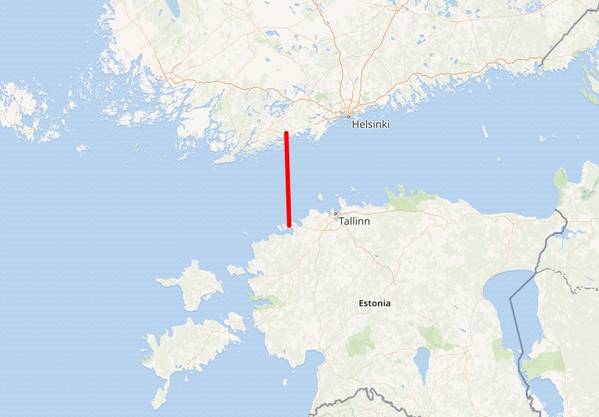
A subsea gas pipeline, the Balticconnector, connecting Finland and Estonia under the Baltic Sea has been likely damaged by "outside activity", the Finnish government said on Tuesday.
This is what is known so far:
WHAT IS THE BALTICCONNECTOR?
The Balticconnector pipeline connects Inkoo in Finland and Paldiski in Estonia, with its subsea section running 77 km (48 miles) across the Gulf of Finland, an arm of the Baltic Sea that stretches eastwards into Russian waters and ends at the port of St Petersburg.
The pipeline is jointly operated by Estonian electricity and gas system operator Elering and Finnish gas transmission system operator Gasgrid, each of which own a 50% stake.
It can transport up to 7.2 million cubic metres of gas per day (mcm/day), or 80 gigawatt hours (GWh) per day, in either direction.
The pipeline opened in December 2019 to help integrate gas markets in the region, giving Finland and the Baltic nations of Estonia, Latvia and Lithuania more flexibility of supply.
WHAT IS THE SOURCE OF THE GAS?
Finland stopped importing pipeline gas from Russia last year in the wake of Moscow's invasion of Ukraine.
Finland now mostly gets its gas from imports of liquefied natural gas (LNG) from new terminals at Inkoo and Hamina.
Estonia can receive gas via Latvia, which is connected to the wider European gas pipeline system and home to the region's gas storage site Incukalns, which is currently 95% full, storing 21.48 terawatt hours (TWh). Estonia also has access to LNG via the floating Klaipeda terminal in Lithuania.
The majority of LNG cargoes arriving at Klaipeda and Inkoo come from the United States, with smaller volumes also received from Norway and other countries, LSEG data showed.
A small volume of gas may still stem from Russia, as Europe has not banned LNG imports from the country and the regassified volumes imported at other terminals may find their way to Finland and Estonia through the wider European gas pipeline system.
WHAT HAS HAPPENED?
The Balticconnector pipeline sustained a sharp drop in pressure at 2 a.m. local time on Oct. 8 (2300 GMT, Oct. 7).
Hourly data from Estonian gas grid operator Elering showed pipeline pressure dropping from 34.5 bar to around 12 bar and then a further decline one hour later to just 6 bar, suggesting the contents had leaked into the ocean.
The valves of the pipeline have been shut to prevent more gas from escaping.
Balticconnector was transporting around 30 gigawatt hours (GWh) of gas per day from Finland to Estonia at the time of the incident, Finnish gas system operator Gasgrid said.
WHAT CAUSED THE PRESSURE DROP?
The unusual drop in pressure indicated that the offshore pipeline was damaged and gas had leaked, Gasgrid said.
No potential causes for the outage could be ruled out for the time being, including sabotage, a spokesperson for Estonian gas system operator Elering said on Monday.
Repairing the Balticconnector pipeline could take months or more if a puncture is confirmed, Gasgrid said.
HAS THE SHUTDOWN AFFECTED GAS SUPPLY?
Both Gasgrid and Elering said consumers in their respective countries continued to receive gas from other sources, which would also be able to cover demand over the winter.
Last year, Gasgrid leased a floating storage and regasification unit (FSRU) to import LNG via Inkoo terminal, replacing supplies from Russia.
The FSRU has daily regasification capacity of 140 GWh/day or more than 40 TWh per year, well above Finland's gas import needs.
The Inkoo LNG terminal injected around 10 terawatt hours (TWh) of gas into Finland's gas network over the period April-September.
In addition Finland has a smaller Hamina LNG terminal which can supply up to 6 GWh/day into the Finnish gas grid.
Elering also said shortages of gas were not foreseen in the Baltic region even if the pipeline were to remain inoperable throughout the winter, as supplies were still available from storage in Latvia and from Lithuania's LNG import terminal.
(Reuters - Reporting by Nerijus Adomaitis and Nora Buli; editing by Nina Chestney and Jonathan Oatis)